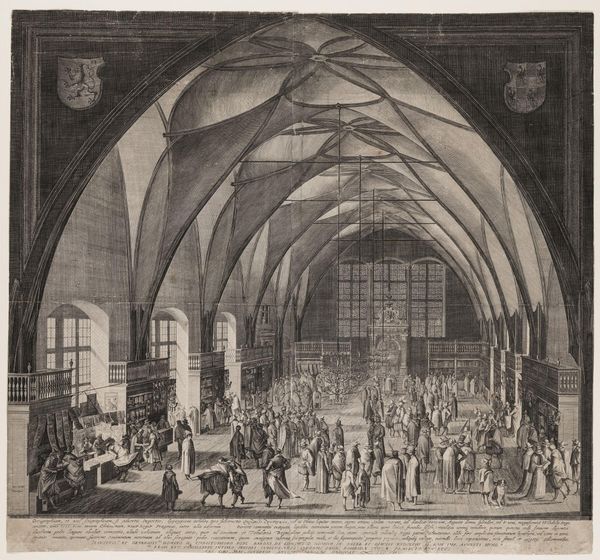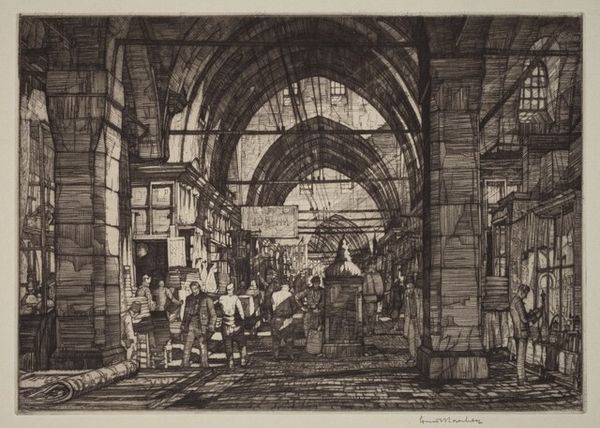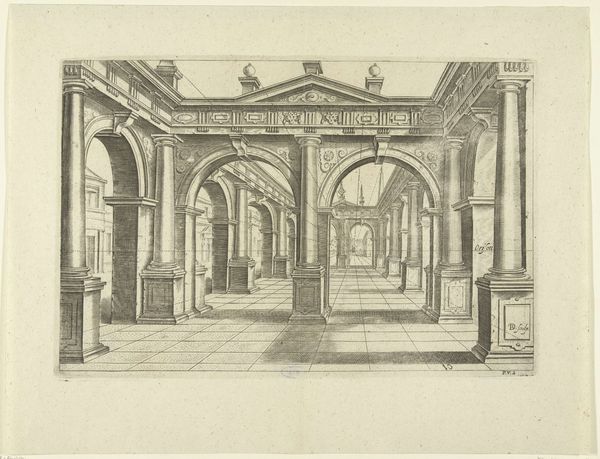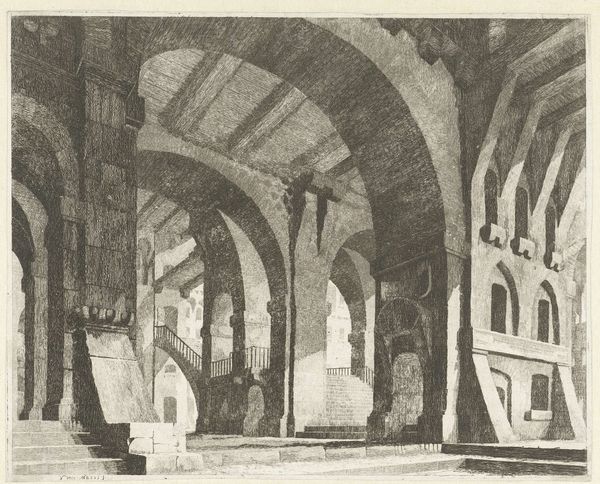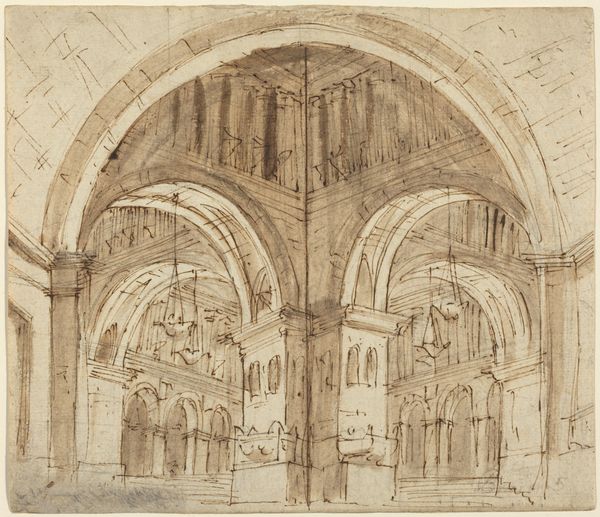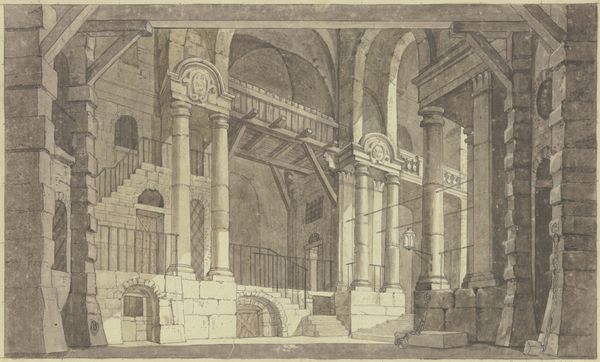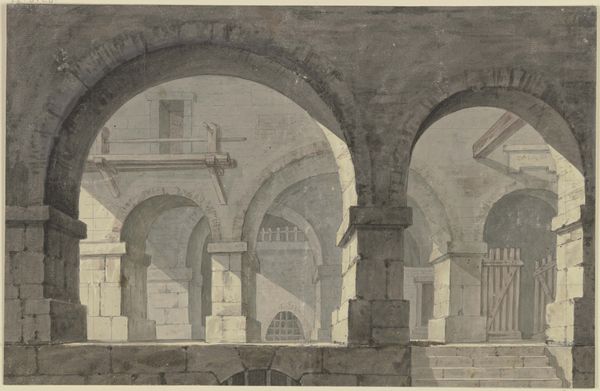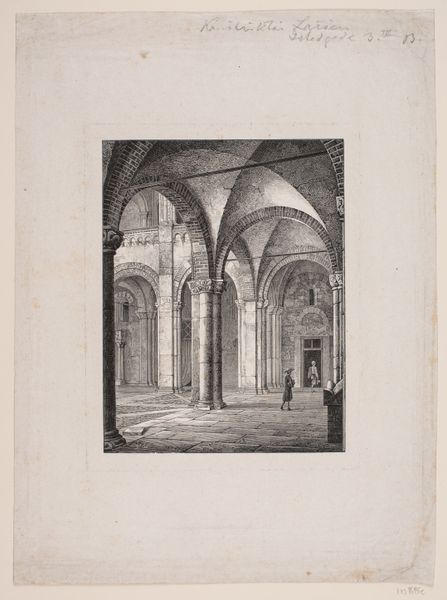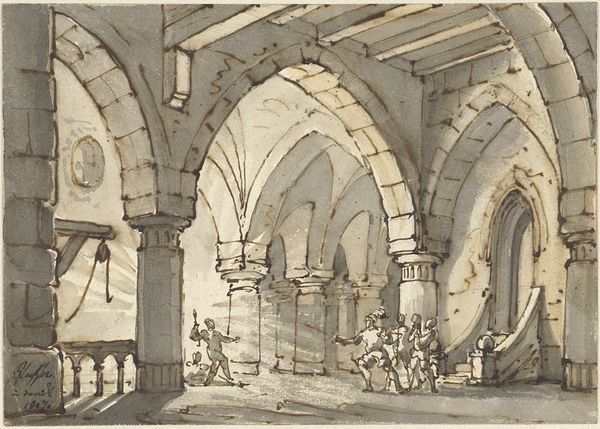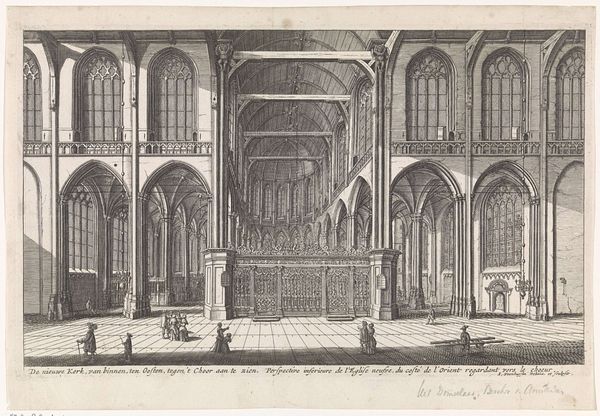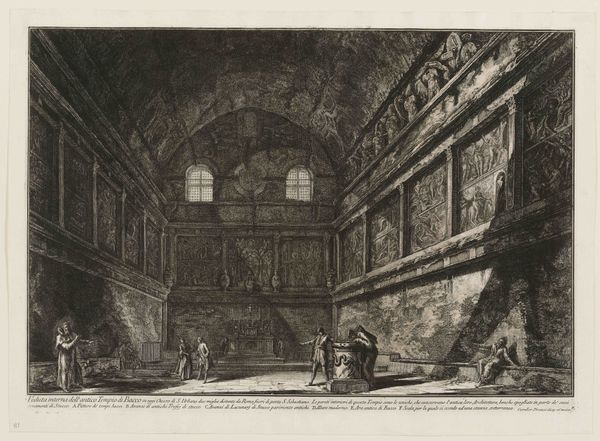
print, etching, engraving, architecture
# print
#
etching
#
landscape
#
etching
#
islamic-art
#
engraving
#
architecture
Copyright: National Gallery of Art: CC0 1.0
Curator: Let’s discuss Louis Conrad Rosenberg's 1927 etching, "Fountain of Aya Sophia, Constantinople". My immediate impression is one of reverence, a feeling of hushed awe inspired by this place. Editor: I'm struck by Rosenberg’s evident engagement with architectural spaces through the etching process. The dense, almost frantic, network of lines meticulously capture light reflecting on the fountain's materials and its spatial environment. We have a strong interplay between labor and place in the physical details here. Curator: Yes, the repetition of archways certainly builds a powerful symbolism, drawing the eye toward the detailed fountain, which functions almost as an altar within the architecture. Notice how that ornate fountain becomes the focal point. It embodies cultural memory, referencing the ablutions that mark sacred space in the Ottoman era. Editor: Consider the context here though, the very process of creating this etching highlights the accessibility and distribution of such imagery. An etching allowed for mass production, engaging new audiences with visual depictions of specific architecture while democratizing cultural images, transforming them from singular objects into mass culture experiences for consumption. Curator: Good point, as this work highlights both physical devotion and artistic circulation. Beyond the implied religious practices and aesthetic wonder, the etching's stark monochromatic presentation really underscores a specific kind of architectural legacy that remains culturally significant. I am interested in those lasting elements... Editor: And I'm thinking that each line represents labor— the intense craft and intention poured into depicting not only this scene but also engaging and critiquing art's place within society as a mass produced object and as a tool of material culture. So much intention, process, labor embedded here. Curator: Indeed, a wonderful combination of spiritual resonance and material ingenuity to be found in this work, wouldn't you agree? Editor: Yes, the way Rosenberg engaged process is thought-provoking, leading us to ponder the intersection of material consumption and architectural space as well as how buildings take on different significations across cultures through process itself.
Comments
No comments
Be the first to comment and join the conversation on the ultimate creative platform.


